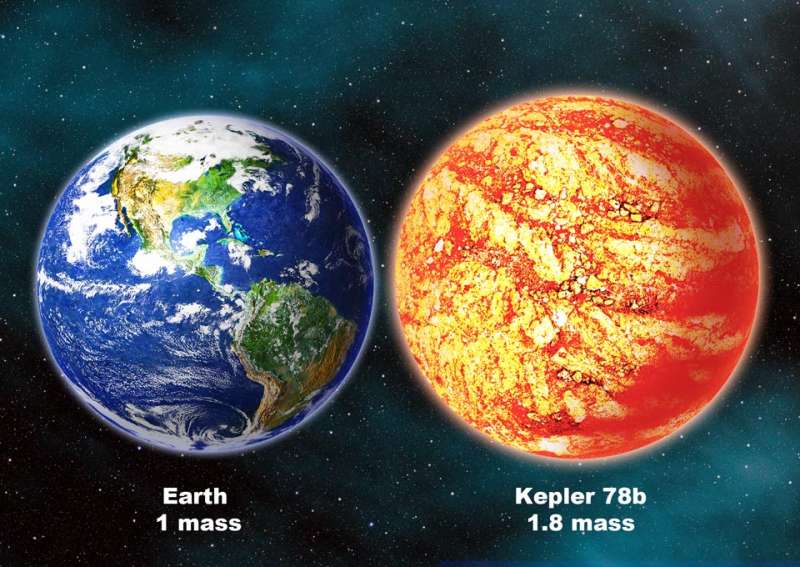
|
Credit & Copyright: David A. Aguilar
(CfA)
Explanation:
Even though Kepler-78b is only slightly larger than the Earth, it should not exist.
Its size is extraordinary only in the sense that it is the most similar in size to
the
Earth of any exoplanet yet directly discovered.
Its orbit, however, is
extraordinary
in the sense that it circles a Sun-like star 40 times closer than
planet Mercury.
At such a scathing distance, even
rock is liquid.
Models of planet formation predict that no planet can form in such a
close orbit, and models of
planet evolution predict that
Kepler-78b's orbit should decay
--
dooming
the planet to eventually merge with its parent star.
Illustrated above
in comparison with the Earth,
Kepler-78b
was discovered by eclipse with the Earth-orbiting
Kepler spacecraft
and further monitored for subtle wobbles by the
HARPS-
North,
a spectrograph attached to the 3.6-meter
Telescopio Nazionale Galileo in the
Canary Islands.
New Estimate:
20%
of Sun-like stars have a habitable Earth-sized planet.
|
January February March April May June July August September October November December |
| ||||||||||||||||||||||||||||||||||||||||||||||||
NASA Web Site Statements, Warnings, and Disclaimers
NASA Official: Jay Norris. Specific rights apply.
A service of: LHEA at NASA / GSFC
& Michigan Tech. U.
Based on Astronomy Picture
Of the Day
Publications with keywords: extrasolar planet
Publications with words: extrasolar planet
See also:
